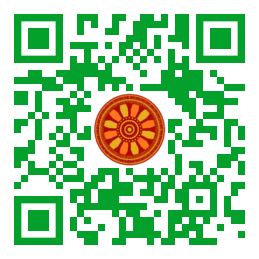
:: International Transaction Journal of Engineering, Management, & Applied Sciences & Technologies
http://TuEngr.com

ISSN 2228-9860
eISSN 1906-9642
CODEN: ITJEA8
FEATURE PEER-REVIEWED ARTICLE
Vol.12(13) (2021) |
Typologies of Design Thinking: The Constructive Perspective
 Sucharita Srirangam, Ng Veronica, TamilSalvi Mari, Sujatavani Gunasagaran (School of Architecture, Building and Design, Taylor's University, Selangor, MALAYSIA).
Sucharita Srirangam, Ng Veronica, TamilSalvi Mari, Sujatavani Gunasagaran (School of Architecture, Building and Design, Taylor's University, Selangor, MALAYSIA).
Sivaraman Kuppusamy (School of Built Environment, University of Reading Malaysia, Johor, MALAYSIA).
Disciplinary: Architectural education.
doi: 10.14456/ITJEMAST.2021.257
Keywords: Architectural education; Design thinking learning; Student-centred learning; Design thinking typologies; Critical typologies; Soft typologies; Hard typologies; Positivistic typologies; In-studio observation; Learner-led teaching pedagogy; Studio-based teaching; studio process.
AbstractArchitectural design is subjective. The generic structure and content of studio-based learning are so rigid and could be boring for a creative and original learner. The research aims to offer clarity for a design studio pedagogy on various subjectivities on design thinking. First, the research explores theoretical discourses formulating a thematic summary of contemporary publications pertinent to design studio teaching and its determinants. Next was a procedure for data collection to venture an understanding of the subjectivity of designers. Case Study was the methodology, and in-studio observations and interviews were the methods employed. The final year studios of University Malaya and Taylor's have been the case studies. The findings suggested nine design thinking typologies that will be grouped, pertinent to the domain of the constructs, such as a) Positivistic or Hard typologies: b) Critical or Soft typologies: and c) Interpretative or the hard/soft typologies. The research concludes by stressing the importance of learner-led teaching pedagogy for studio-based teaching in architecture through formulating a diversified set of design thinking typologies.Paper ID: 12A13E
Cite this article:
Srirangam, S., Ng, V., Mari, TS., Gunasagaran, S. and Kuppusamy, S. (2021). Typologies of Design Thinking: The Constructive Perspective. International Transaction Journal of Engineering, Management, & Applied Sciences & Technologies, 12(13), 12A13E, 1-9. http://doi.org/10.14456/ITJEMAST.2021.257
References
- Ardington, A., & Drury, H. (2017). Design studio discourse in architecture in Australia: The role of formative feedback in assessment. Art, Design & Communication in Higher Education, 16(2), 157-170.Atelier Project, 2011, 'Design things', Chapter 6: Designing as performing, MIT Press
- Attoe, W., & Mugerauer, R. (1991). Excellent studio teaching in architecture. Studies in Higher Education, 16(1), 41-50.
- Brown, T. (2009). Change by Design, Harper Business.
- Carmona, M. (2017). The formal and informal tools of design governance. Journal of Urban Design, 22(1), 1-36.
- Lawson, Bryan (2005). How Designers Think - the design process demystified. Architectural Press, Oxford.
- Ochsner, J. K. (2000). Behind the mask: a psychoanalytic perspective on interaction in the design studio. Journal of Architectural Education, 53(4), 194-206.
- Pallasmaa, J. (2009). The thinking hand: existential and embodied wisdom in architecture, Hoboken: Wiley.
- Rodgers, P. & Winton, E. (2010). Design Thinking, Conference proceedings on Engineering and Product Design, Norwegian University, Norway
- Rowe, P. (1986). Design Thinking. MIT Press
- Schin, D., (1983). The Reflective Practitioner. Basic Books, New York
- Schin, D., (1984). The Architectural Studio as an Exemplar of education for Reflection-in-action. Journal of Architectural Education, 38(1), 2-9
- Schon, D. A. & Wiggins, G., 1992. Kinds of seeing and their functions in designing. Design Studies, 13(2) 135-156.
- Schon, D., Sanyal B., and Mitchell, W. (eds.) (1998). High Technology and Low Income Community: Prospects for the Positive Use of Advanced Information Technology. MIT Press Cambridge, MASS, USA, ii-iii.
- Snodgrass, A., & Coyne, R. (2013). Interpretation in architecture: design as a way of thinking. Routledge.
- Srirangam, S et al. (2019), Typologies of Design Thinking - the learner-led perspectives, Conference paper, ICACE, Kuala Lumpur, 2019
- Tepavevi, B. (2017). Design thinking models for architectural education. The Journal of Public Space, 2(3), 67-72.
- Unwin, S. (2007), Analysing architecture through drawing. Building Research & Information, 35(1), 101-110.
Other issues:
Vol.13(1)(2021)
Vol.12(12)(2021)
Vol.12(11)(2021)
Archives
Call-for-Papers
Call-for-Scientific PapersCall-for-Research Papers: ITJEMAST invites you to submit high quality papers for full peer-review and possible publication in areas pertaining engineering, science, management and technology, especially interdisciplinary/cross-disciplinary/multidisciplinary subjects.
To publish your work in the next available issue, your manuscripts together with copyright transfer document signed by all authors can be submitted via email to Editor @ TuEngr.com (no space between). (please see all detail from Instructions for Authors)
Publication and peer-reviewed process:
After the peer-review process (4-10 weeks), articles will be on-line published in the available next issue. However, the International Transaction Journal of Engineering, Management, & Applied Sciences & Technologies cannot guarantee the exact publication time as the process may take longer time, subject to peer-review approval and adjustment of the submitted articles.